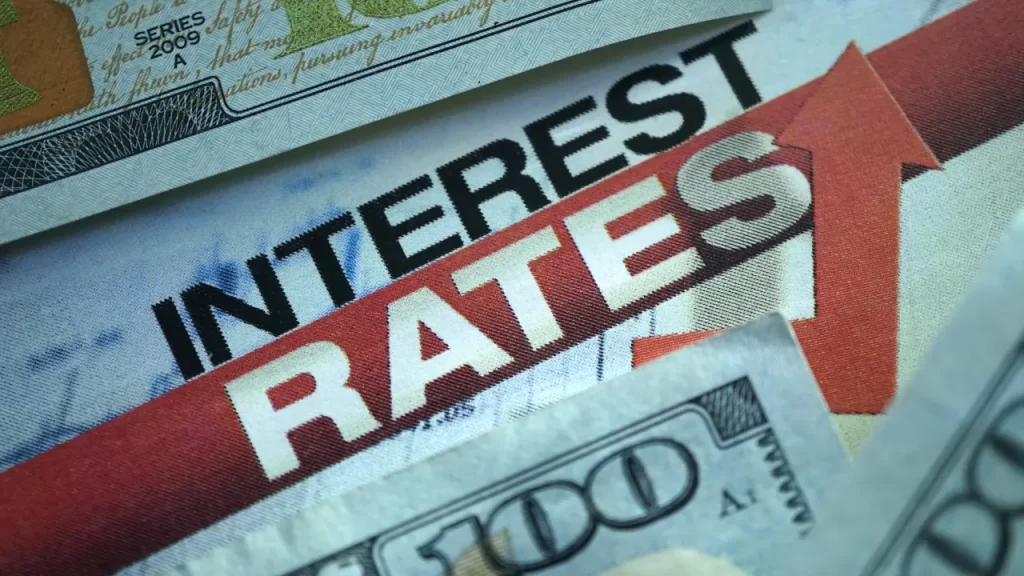Interest rates and inflation are two of the most influential economic factors that impact CFD trading across various asset classes, including stocks, forex, commodities, and indices.
Understanding how these factors affect market movements can help traders make informed trading decisions and manage risk effectively.
In this guide, we’ll break down how interest rates and inflation work, their effects on CFD markets, and strategies to trade them successfully.

Understanding Interest Rates and Inflation
1. What Are Interest Rates?
Interest rates represent the cost of borrowing money and are set by central banks, such as the South African Reserve Bank (SARB), U.S. Federal Reserve (Fed), and European Central Bank (ECB).
- Higher interest rates → Increase borrowing costs, slow economic growth, and strengthen a currency.
- Lower interest rates → Reduce borrowing costs, encourage spending and investment, and weaken a currency.
2. What Is Inflation?
Inflation measures the rate at which prices for goods and services rise over time. The most commonly used inflation indicators are:
- Consumer Price Index (CPI) – Measures changes in retail prices.
- Producer Price Index (PPI) – Measures wholesale inflation (input costs for businesses).
- High inflation → Reduces purchasing power, leading to higher interest rates.
- Low inflation → Encourages spending, often leading to lower interest rates.

How Interest Rates Affect CFD Markets
Interest rate decisions have a direct impact on CFD trading by influencing stock markets, forex pairs, commodities, and bond yields.
1. Stocks and Indices
Rising interest rates are generally negative for stock markets because:
- Higher borrowing costs reduce corporate profits.
- Investors shift funds from stocks to interest-bearing assets (bonds, savings).
- Stock indices like the S&P 500, JSE Top 40, and FTSE 100 may decline.
Falling interest rates are positive for stock markets because:
- Cheap borrowing encourages business expansion and higher profits.
- Investors move capital into equities for better returns.
2. Forex Markets (Currency CFDs)
- Higher interest rates strengthen a country’s currency, as investors seek higher returns on deposits.
- Lower interest rates weaken a currency, as lower yields reduce investor interest.
- Example: If the U.S. Federal Reserve raises interest rates, the USD strengthens against currencies with lower rates, impacting forex CFD pairs like USD/ZAR or EUR/USD.
3. Commodity Markets (Gold, Oil, and Others)
- Gold CFDs: Higher interest rates make gold less attractive, as it doesn’t yield interest, leading to price declines.
- Oil CFDs: Rising rates can slow economic growth, reducing demand for oil and causing price drops.
- Lower interest rates generally support commodity prices as money flows into riskier assets.

How Inflation Affects CFD Markets
Inflation has a complex relationship with CFD markets, as both moderate and extreme inflation can impact different assets.
1. Stocks and Indices
- Mild inflation (2-3%) is positive for stocks, as it reflects economic growth.
- High inflation (above 5%) is negative, as:
- Consumer purchasing power declines.
- Businesses face rising costs, reducing profits.
- Central banks may raise rates aggressively, leading to stock market declines.
2. Forex Markets
- High inflation weakens a currency, as purchasing power declines and confidence erodes.
- Low inflation strengthens a currency, as investors see economic stability.
- Example: If South Africa’s inflation rises sharply, the ZAR weakens against currencies like the USD or EUR, affecting forex CFDs.
3. Commodities (Gold and Oil)
- Gold CFDs: High inflation boosts gold prices, as investors seek safe-haven assets.
- Oil CFDs: Rising inflation often pushes oil prices higher, as production costs increase.
- If inflation falls, commodity prices may decline due to weaker demand.

Trading Strategies for Interest Rates and Inflation in CFDs
Trend Following During Rate Decisions
- If a central bank signals higher interest rates, traders can short stock CFDs and long currency CFDs for that country.
- If rates are cut, traders may buy stocks and sell the local currency.
Trading Inflation Reports
- High CPI/PPI numbers → Expect rate hikes → Short stocks, buy gold, buy strong currencies.
- Low CPI/PPI numbers → Expect rate cuts → Long stocks, short gold, short weak currencies.
Monitoring Central Bank Statements
- Traders should watch for guidance from SARB, Fed, ECB, as rate expectations drive market movements.

Key Economic Reports to Watch
- Central Bank Rate Announcements (SARB, Fed, ECB)
- Consumer Price Index (CPI) – Inflation Data
- Producer Price Index (PPI) – Wholesale Inflation
- Gross Domestic Product (GDP) Reports
- Employment Data (Non-Farm Payrolls, Unemployment Rate)

Common Mistakes Traders Make When Trading Interest Rates and Inflation
Ignoring Market Expectations: Markets price in rate hikes/cuts before they happen, so a rate hike may not boost a currency if it was already expected.
Overreacting to a Single Data Point: Inflation and rate decisions should be seen in long-term trends, not just a single report.
Trading During Extreme Volatility: Rate decisions and inflation reports can cause whipsaws—false breakouts that hit stop losses before reversing.
Final Thoughts
Interest rates and inflation are critical factors that shape financial markets, influencing stock prices, forex movements, and commodity valuations.
Traders who understand how these forces interact can develop smarter trading strategies, anticipate market shifts, and manage risk effectively.






